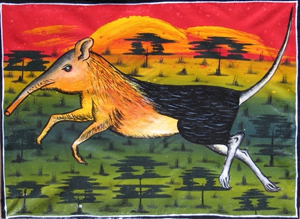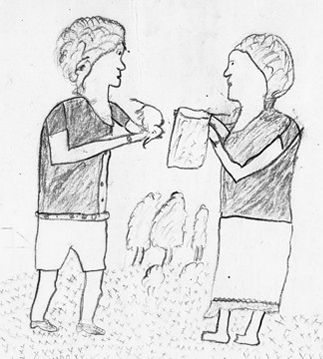 |
CURRENT TOPICS
(click on title for full article)
 |
|
| Rhynchocyon by a TingaTinga artist, Dar es Salaam, Tanzania, 2006. | |
 |
|
| Examining a captured sengi by Robert Ngala, Msabaha Primary School, Malindi, Kenya (1972). |
The Karoo Rock Sengi is found in the Nama Karoo of South Africa and went unrecognised in museum collections for more than 30 years.
A new species of giant sengi (genus Rhynchocyon)
A new species of giant sengi (genus Rhynchocyon) has been described. It is only found in two high-altitude pristine forest blocks in the northern Udzungwa Mountains of south-central Tanzania, East Africa.
Which Giant Forest Sengi (Rhynchocyon) did you see?
In most forest and dense woodland habitats where Rhynchocyon occurs, it is relatively easy to distinguish the three species visually. However, R. cirnei has several subspecies and at least one of these may be difficult to distinguish from R. petersi, especially under field conditions. The material on these pages is intended to assist you in determining which species you observe in the field.
Protocols for surveying Rhynchocyon
In the next couple of years there will be numerous teams surveying the flora and fauna in several Tanzanian forests. Many of these teams have agreed to include sengis (elephant-shrews) in their surveys. The material on these pages is intended to try and achieve some consistency in the information gathered by a large number of people with varying backgrounds.
How Many Species of Macroscelides are there?
The Round-eared Sengi (Macroscelides proboscideus) is distributed from central Kaokoveld in north-western Namibia to the south-eastern Cape of South Africa – a linear distance of over 2000 km. Within this range the species shows extraordinary variation in pelage colour, and this has stimulated taxonomists, over the past 200 years, to describe three separate species and numerous subspecies.
© Copyright 2008 California Academy of Sciences